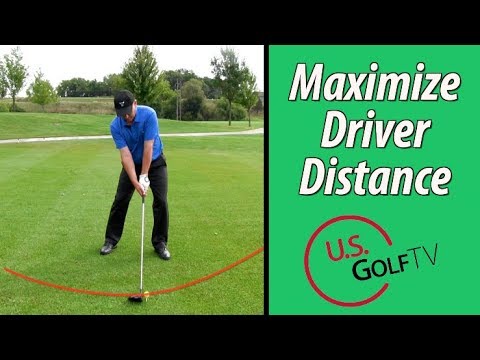
When hitting a fade with a driver, it is important to open your stance and position your body so that the clubface is slightly left of the target. Swing along the line between your feet to create a curve in the ball. The ball will curve more if you have a wider stance. Teeing the ball down creates a negative angle of attack as well as a out-to-in clubpath.
Rotating your top hand
Rotating your tophand is a key ingredient in hitting fades with a driver. Rotating your tophand makes it easier to hit the club and make it appear softer. Your top hand should be at least two knuckles from the address. If you can reach two knuckles from the address, you're on your way toward a fade together with a driver.
When you rotate your top hand to hit a fade with a driver, you'll want to keep the clubface open and a line of motion that will move the ball right. This will help the ball move further through the air and create a more controlled fade. It is important to practice this technique as with all shots.
Clubface adjustment
To achieve consistent results, you can adjust your clubsface to hit a fade driver. First, make sure you check your clubface at address and backswing. Then, adjust the angle of the clubface toward your target. Keep the clubface from being too open.

The proper grip and stance can help you hit fades. Keep your shoulders down when you are hitting a fade. This will help you stabilize your clubface and encourage a left-to right swing. Also, don't hit your fade too far to the outside of the target.
Adjusting your body posture
Many players struggle with hitting a fade when using a driver. While some people are naturally good at hitting a fade, others struggle and end up hitting big slices and sudden hooks. No matter your level of golf ability, you can learn to hit a fade simply by changing your body position.
You can adjust your body position to hit the fade with a driver and make your shot fly higher and roll lower. This ball flight will be more flattering, and you'll be adding effective loft to your shot.
Creating a natural swing path
Open your stance to a driver and hit a fade. Your driver should point at your target but slightly to the left. Then, swing through the line of your feet. The ball's curve will be more gentle if you stand openly. Another tip is to tee the ball down if you'd like to hit it from a negative angle of attack. This will result in your arms and hands dropping and an outside-in swing path.
Once your body is in the correct position, the next step is to adjust the angle of your clubface. Your swing path should be adjusted according to whether you're a left- or right-handed golfer. If you're a left-handed person, your face should be towards the right at impact. Your face will also point to the left if you're left-handed.

Alignment sticks can help you practice your fade shots
Alignment stick help golfers determine their stance, improve their golf swing mechanics, and make it easier to align their clubs. These tools can be used to make a target on the practice area, home golf course, or chipping green. Alignment sticks allow golfers to make precise shots by accurately determining the ball's alignment and stance width.
To practice your fade shots you can use alignment tools in many different ways. To create a repeatable swing pattern, launch balls to the left and right sides of the alignment sticks. These sticks can be used to measure your swing plane, hip turn, and other movements.
FAQ
How does a great golf swing look?
Balance is the key ingredient to a great golf swing. Balance is the ability to be steady and even throughout your entire body movement. Your arms should be relaxed and strong when you swing the golf club. Keep your shoulders straight and parallel to the target line.
Follow through by keeping your head still as you backswing. Swing effortlessly and keep your wrists straight. Don't force the ball. Instead, be fluid and smooth.
What kind of clubs do I need?
There are many types of clubs. Most players start out with a driver - a heavy metal club that allows them to hit the ball further. Woods, wedges and wedges are all options.
Woods are longer clubs made to allow players to play closer to the pin and still be able to reach green. They are usually used for long drives.
Irons are shorter clubs designed to assist players in hitting the ball closer to pin. They are frequently used for chipping and putting.
The wedges are specialized clubs that control the ball's flight path. They are typically used for shots that require precise direction.
Putters are small clubs designed to roll the ball towards the cup. Players use them to make short putts.
What type of shot do you want to make determines the type of club that you choose. Different types of shots are better served by different clubs.
For example, drivers are useful for hitting the ball far away from the hole. Wooden are perfect for driving the ball long distances. Irons are ideal for short shots. Wedges are great at controlling the ball's flight. Putters work well for rolling a ball into the hole.
How can a golfer score points on the course?
Points are awarded based how well a golfer performs in a competition. There are many different ways that points can be scored in golf. A player might win a tournament by scoring more points than any other player. Or, a player may finish second in a tournament and get half the prize money won by the winner. For placing in the third through 10th places, points are also given. These extra points are called'strokes'.
These official competitions are not the only ones that award points. There are also many unofficial events which award points to the highest performing players. In some cases, a player may be given bonus points if they have previously performed well in a particular event.
Statistics
- Professional golfers typically make between 60% and 70% of greens in regulation. (en.wikipedia.org)
- In the United States, the number of people who play golf twenty-five times or more per year decreased from 6.9 million in 2000 to 4.6 million in 2005, according to the [51] (en.wikipedia.org)
- He shanked the first attempt, but it is estimated his second went more than 200 yards (180 m).[52]Golf courses worldwide. Below are the top 20 countries with the most golf courses as of 2019.[53]CountryNumber of (en.wikipedia.org)
- In the United States, women made up 25 percent of golfers in 2021, which was up from 19 percent in 2011, and junior female golfers account for 35 percent or 1.1 million golfers.[50] (en.wikipedia.org)
External Links
How To
How to Improve Your Putting Game
Golf has been played for hundreds of years. It was developed in ancient Egypt and has been played throughout Europe and Asia. America became a part of it later. Golf is a sport that requires many skills such as strength, agility, flexibility, coordination, eye-hand coordination, and concentration.
Good mental and physical preparation are essential for playing well. Also, you should learn to swing correctly and hit it with accuracy. This will improve your ability to balance and time when you touch the ball.
There are many ways you can improve your putting. The first is to practice consistently, especially before participating in a tournament. Another way is to use a tool called the "puttertrainer". This will help you improve your posture and your muscles can bend down or straighten again. This improves your vision and muscle control.
Grip pressure is another factor that can affect your ability to putt. Your hands will become tired if your grip pressure is too high. You may lose power if your hands are too tight. Depending on the shot, your grip pressure should be different. For example: If you're near the hole, you need to apply more force, while you can use less force if your are farther away.
It is important to keep your wrists straight. This will give you more freedom to move your arms and shoulders during the stroke. The wrist movement should be smooth and fluid. For help with your putting technique, watch videos online or consult books. For tips, ask other players.